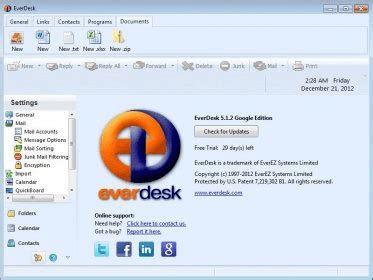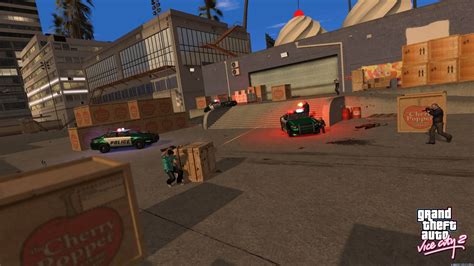Exploring matter with neutrons
Author: g | 2025-04-24

Exploring matter with Neutrons 1: Exploring matter with Neutrons explains neutrons and the unique properties that make them so useful to science and industry. Download : Exploring

Neutrons and Neutron-Matter Interactions: Exploring
AssignmentsCastle Learning Review Assignments Video: Mass-Energy Equivalence Wed. 3 p.m. Video: Standard Model Thursday 3 p.m. Exam: Friday EQ: What is matter and energy?AgendaStandard Model Discussion The Particle Adventure Quarky Worksheet Matter and AntimatterAs we’ve learned previously, the atom is the smallest part of an element (such as oxygen) that has the characteristics of the element. Atoms are made up of very small negatively charged electrons surrounding, surrounding the much larger nucleus. The nucleus is composed of positively charged protons and neutral neutrons. The positively charged protons exert a repelling electrical force upon each other, but the strong nuclear force holds the protons and neutrons together in the nucleus.This completely summarized our understanding of atomic structure until the 1930s, when scientists began to discover evidence that there was more to the picture, and that protons and nucleons were made up of even smaller particles. This launched the particle physics movement, which, to this day, continues to challenge our understanding of the entire universe by exploring the structure of the atom.In addition to matter we’re familiar with, researchers have discovered the existence of antimatter. Antimatter is matter made up of particles with the same mass as regular matter particles, but opposite charges and other characteristics. An antiproton is a particle with the same mass as a proton, but a negative (opposite) charge. A positron has the same mass as an electron, but a positive charge. An antineutron has the same mass as a neutron, but has other characteristics opposite that of the neutron.When a matter particle and its corresponding antimatter particle meet, the particles may combine to annihilate each other, resulting in the complete conversion of both particles into energy consistent with the mass-energy equivalence equation: E=mc2.Question: A proton and an antiproton collide and completely annihilate each other. How much energy. Exploring matter with Neutrons 1: Exploring matter with Neutrons explains neutrons and the unique properties that make them so useful to science and industry. Download : Exploring An exploration into the world of neutrons-matter interaction, the experimental instruments used to study matter at the atomic scale, the large neutrons applications and related technologies Exploring matter with Neutrons - free download. Identifying Neutrons Nuclei And Matter An Exploration Of The Physics Of Slow Neutrons Exploring Different Genres Considering Fiction vs. Non-Fiction Neutrons Nuclei And Matter Exploring matter with Neutrons J 'Exploring Matter with Neutrons' is an interactive software with over 1,000 pages and animations on the science of neutrons, including sources and tools, and their applications in various fields. Download Exploring matter with Neutrons J 'Exploring Matter with Neutrons' is an interactive software with over 1,000 pages and animations on the science of neutrons, including sources and tools, and their applications in various fields. Exploring Matter with Neutrons (2025) The multimedia encyclopaedia Exploring matter with neutrons was published in English and French in 2025/2025 in the form of a CD-ROM. It is Is released? (mproton=1.67*10-27kg)Answer: Forces in the UniverseWe’ve dealt with many types of forces in this course, ranging from contact forces such as tensions and normal forces to field forces such as the electrical force and gravitational force. When observed from their most basic aspects, however, we can consolidate all observed forces in the universe into the following four known fundamental forces. They are, from strongest to weakest:Strong Nuclear Force: holds protons and neutrons together in the nucleus Electromagnetic Force: electrical and magnetic attraction and repulsion Weak Force: responsible for radioactive beta decay Gravitational Force: attractive force between objects with mass Understanding these forces remains a topic of scientific research, with current work exploring the possibility that forces are actually conveyed by an exchange of force-carrying particles such as photons, bosons, gluons, and gravitons.Classification of MatterThe current model of sub-atomic structure used to understand matter is known as the Standard Model. Development of this model began in the late 1960s, and has continued through today with contributions from many scientists across the world. The Standard Model explains the interactions of the strong (nuclear), electromagnetic, and weak forces, but has yet to account for the gravitational force. The search for the theorized Higgs Boson at Fermilab and CERN is an attempt to better unify and strengthen the Standard Model.Although the Standard Model itself is a very complicated theory, the basic structure of the model is fairly straightforward. According to the model, all matter is divided into two categories, known as hadrons and the much smaller leptons. All of the fundamental forces act on hadrons, which include particles such as protons and neutrons. In contrast, the strong nuclear forces doesn’t act on leptons, so only three fundamental forces act on leptons such as electrons, positrons, muons, tau particles and neutrinos.Hadrons are further dividedComments
AssignmentsCastle Learning Review Assignments Video: Mass-Energy Equivalence Wed. 3 p.m. Video: Standard Model Thursday 3 p.m. Exam: Friday EQ: What is matter and energy?AgendaStandard Model Discussion The Particle Adventure Quarky Worksheet Matter and AntimatterAs we’ve learned previously, the atom is the smallest part of an element (such as oxygen) that has the characteristics of the element. Atoms are made up of very small negatively charged electrons surrounding, surrounding the much larger nucleus. The nucleus is composed of positively charged protons and neutral neutrons. The positively charged protons exert a repelling electrical force upon each other, but the strong nuclear force holds the protons and neutrons together in the nucleus.This completely summarized our understanding of atomic structure until the 1930s, when scientists began to discover evidence that there was more to the picture, and that protons and nucleons were made up of even smaller particles. This launched the particle physics movement, which, to this day, continues to challenge our understanding of the entire universe by exploring the structure of the atom.In addition to matter we’re familiar with, researchers have discovered the existence of antimatter. Antimatter is matter made up of particles with the same mass as regular matter particles, but opposite charges and other characteristics. An antiproton is a particle with the same mass as a proton, but a negative (opposite) charge. A positron has the same mass as an electron, but a positive charge. An antineutron has the same mass as a neutron, but has other characteristics opposite that of the neutron.When a matter particle and its corresponding antimatter particle meet, the particles may combine to annihilate each other, resulting in the complete conversion of both particles into energy consistent with the mass-energy equivalence equation: E=mc2.Question: A proton and an antiproton collide and completely annihilate each other. How much energy
2025-03-30Is released? (mproton=1.67*10-27kg)Answer: Forces in the UniverseWe’ve dealt with many types of forces in this course, ranging from contact forces such as tensions and normal forces to field forces such as the electrical force and gravitational force. When observed from their most basic aspects, however, we can consolidate all observed forces in the universe into the following four known fundamental forces. They are, from strongest to weakest:Strong Nuclear Force: holds protons and neutrons together in the nucleus Electromagnetic Force: electrical and magnetic attraction and repulsion Weak Force: responsible for radioactive beta decay Gravitational Force: attractive force between objects with mass Understanding these forces remains a topic of scientific research, with current work exploring the possibility that forces are actually conveyed by an exchange of force-carrying particles such as photons, bosons, gluons, and gravitons.Classification of MatterThe current model of sub-atomic structure used to understand matter is known as the Standard Model. Development of this model began in the late 1960s, and has continued through today with contributions from many scientists across the world. The Standard Model explains the interactions of the strong (nuclear), electromagnetic, and weak forces, but has yet to account for the gravitational force. The search for the theorized Higgs Boson at Fermilab and CERN is an attempt to better unify and strengthen the Standard Model.Although the Standard Model itself is a very complicated theory, the basic structure of the model is fairly straightforward. According to the model, all matter is divided into two categories, known as hadrons and the much smaller leptons. All of the fundamental forces act on hadrons, which include particles such as protons and neutrons. In contrast, the strong nuclear forces doesn’t act on leptons, so only three fundamental forces act on leptons such as electrons, positrons, muons, tau particles and neutrinos.Hadrons are further divided
2025-04-11Basic Model of the Atom and Atomic TheoryIntroduction to Atoms The three parts of an atom are protons and neutrons, which form the nucleus, and electrons, which orbit the nucleus.Encyclopaedia Britannica/UIG, Getty Images All matter consists of particles called atoms. Atoms bond to each other to form elements, which contain only one kind of atom. Atoms of different elements form compounds, molecules, and objects.Key Takeaways: Model of the AtomAn atom is a building block of matter that cannot be broken apart using any chemical means. Nuclear reactions can alter atoms.The three parts of the atom are protons (positively charged), neutrons (neutral charge), and electrons (negatively charged).Protons and neutrons form the atomic nucleus. Electrons are attracted to the protons in the nucleus, but are moving so quickly they fall toward it (orbit) rather than stick to protons.The identity of an atom is determined by its number of protons. This is also called its atomic number. Parts of an Atom Atoms consist of three parts:Protons: Protons are the basis of atoms. While an atom can gain or lose neutrons and electrons, its identity is tied to the number of protons. The symbol for proton number is the capital letter Z.Neutrons: The number of neutrons in an atom is indicated by the letter N. The atomic mass of an atom is the sum of its protons and neutrons or Z + N. The strong nuclear force binds protons and neutrons together to form the nucleus of an atom.Electrons: Electrons are much smaller than protons or neutrons and orbit around them. What You Need to Know About Atoms This is a list of the basic characteristics of atoms:Atoms cannot be divided using chemicals. They do consist of parts, which include protons, neutrons, and electrons, but an atom is a basic chemical building block of matter. Nuclear reactions, such as radioactive decay and fission, can break apart atoms.Each electron has a negative electrical charge.Each proton has a positive electrical charge. The charge of a proton and an electron are equal in magnitude, yet opposite in sign. Electrons and protons are electrically attracted to each other.
2025-03-26